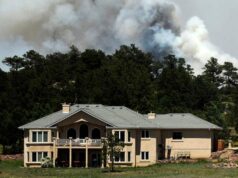
On Monday, Interior Secretary David Bernhardt approved the first-ever oil and gas leasing program for Arctic National Wildlife Refuge, opening up 1.56 million acres of the pristine refuge to drilling and thereby putting threatened species, Indigenous communities, and the climate at risk.
As he announced the move, Bernhardt said his department was gearing up to auction off the drilling leases soon. “I do believe there could be a lease sale by the end of the year,” he said at a press conference.
This, of course, makes perfect sense from an economic perspective, because the oil and gas market are simply booming amid the covid-19 pandemic—oh, wait, sorry: The opposite is true. These past few months, demand for oil and gas has been in the toilet, and the world has been producing too much oil to know what to do with it. The last thing we need is more drilling.
“There’s no good time to open up America’s largest wildlife refuge to drilling and fracking, but it’s absolutely bonkers to endanger this beautiful place during a worldwide oil glut,” Kristen Monsell, a senior attorney at the Center for Biological Diversity, said in an email.
G/O Media may get a commission
Before the covid-19 pandemic cratered fuel demand, some oil and gas companies were clamoring for the Trump administration to let them drill in the Arctic. But amid the current economic conditions, despite Bernhardt’s posturing, it won’t be easy or desirable for companies to buy more oil and gas leases.
That hasn’t stopped Bernhardt and the Trump administration from jumping through hoops for the industry for expansions it’s not even calling for right now.
For instance, while negotiating the nation’s covid-19 relief packages, the Trump administration pushed the Federal Reserve to make its $600 billion Main Street lending program accessible to oil and gas companies. But few energy firms are actually taking advantage of the program.
That’s due in large part to the difficulties they face in obtaining financing for drilling projects. Few banks, the Washington Post recently reported, have been willing to lend companies money for these risky investments. Companies are likely to face the same challenges when it comes to ANWR leases.
“They’d need to find financing from banks, and it’s not clear they’ll be able to,” said Collin Rees, a campaigner at Oil Change International. “There’s been a massive shift away from allowing financing for Arctic drilling.”
In fact, almost every major bank has caved to public pressure and banned any funding of drilling in the Arctic. Bank of America is the lone holdout, and it is currently facing massive pressure from climate organizers to do the same.
If companies don’t make bids on these leases, there are things the Interior Department (run by, it’s worth noting, a former oil and gas lobbyist) could do to encourage oil and gas companies to buy up the land. One way the agency may try to encourage these companies to participate in the auctions is by offering noncompetitive leases, or backroom deals to sell off land for extraction at prices way below the market rate. That would take the pieces of land off the market so that they couldn’t be managed for other purposes, such as conservation.
Even if these leases get sold, companies may not actually drill into them any time soon—so they may not actually end up producing any oil or gas.
“If they try, they’ll face such massive resistance which might discourage them,” said Rees.
Environmentalists plan to do whatever they can to protect the refuge. The Center for Biological Diversity believes opening it to drilling was based on a legally flawed environmental review and plans to take the Interior Department to court. Activists are continually pressuring banks, insurance companies, and asset managers to stop their flow of money to the industry. And Indigenous communities have vowed to give hell to any company that threatens their land and resources in the Arctic.
But none of this needs to happen in the first place: Since demand for oil and gas is so low, officials could simply postpone this drilling program.
“The Trump administration has recently cancelled or delayed lease sales in other areas, and it should do the same for the Refuge,” Monsell said. In July, for instance, the Bureau of Land Management postponed a lease sale in New Mexico of 45,000 acres, and also postponed lease sales in Wyoming of 170,000 acres.
But despite the more obvious options, the Trump administration may do whatever it can to get these leases in oil and gas companies’ hands anyway, just to demonstrate its loyalty to the fossil fuel industry.
“When it comes to ANWR… to me what this was is very much a political battle, and much less over actual oil resources. This is about the Trump administration and Bernhardt showing up as an oil lobbyist, showing the oil industry it can have whatever it wants,” Rees said. “ They’re making a political statement, saying, ‘We will let you drill anywhere, we will trample the rights of Indigenous people, we will throw our endangered species laws out the door, we will … make a laughingstock of our climate and angered the climate movement. But we will continue to do everything you want to show you that you are more important than any of those people.’”
Source: gizmodo.com








